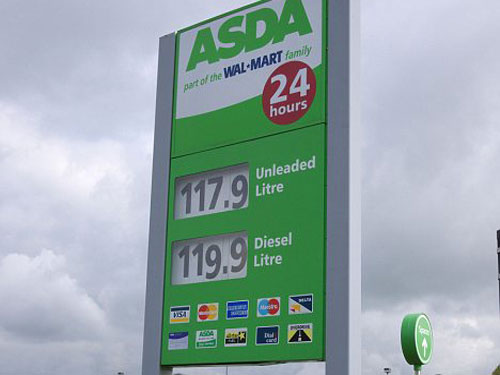Site Prices Update
Last Updated28th June 2022
All calculations on this site are based on current fuel prices, they are checked regularly and calculations are automatically updated.
The costs calculated based on these fuel prices should be regarded as 'good estimates', given that fuel prices vary in different parts of the county and at different time of the year.
The calculations also have different levels of accuracy depending on the nature of the calculation. For example calculating the energy use of a known power output TV is very easy compared to calculating the effect on energy savings when insulating a cavity wall.
Site Calculations
Set Your Own Prices
User PricesFor several of the fuel prices on this site you can now set your own prices and all the calculations on the site will adjust accordingly.
Set Prices
At Confused About Energy we aim to provide practical, impartial advice on all aspects of energy usage, climate change and ways to save money on energy bills.
All calculations on this site are based on current fuel prices they are checked regularly are automatically updated and were last changed on:-
28th June 2022
The costs calculated based on these fuel prices should be regarded as 'good estimates', given that fuel prices vary in different parts of the county and at different time of the year.
The calculations also have different levels of accuracy depending on the nature of the calculation. For example calculating the energy use of a known power output TV is very easy compared to calculating the effect on energy savings when insulating a cavity wall.
Site Calculations
| Electricity | £0.271 per unit (1 kWh) |
| Economy Electricity | £0.094 per unit (1 kWh) |
| Gas | £0.072 per unit (1 kWh) |
| Domestic LPG | £0.122 per unit (1 kWh) |
| Heating Oil | £0.104 per unit (1 kWh) |
| UK Grid CO2 Emissions | 0.233 kg per kWh used |
The main units used in this site are in the table below, For a complete explanation of power and energy Read More.
| Unit | Name | Detail |
|---|---|---|
| W | Watt | Unit of Power |
| kW | Kilowatt | 1000 watts |
| kWh | Kilowatt hour | Measure of Energy |
| L | Litre | Measure of Volume |
Please use twitter to ask a question Message @@EnergyThinking
What is the problem?
Fundamentally it boils down to the simple fact that the planet is getting hotter. That was simple!
What is the cause?
This is simple too. Atmosphere gasses are trapping too much heat, much like a greenhouse. The main gasses responsible for this are Carbon Dioxide and Methane. It is a problem in our era simply because we are burning ancient sources of energy, fossil fuels used to power our industry, cook our food, heat our homes and to travel to Spain for our holidays; producing enormous volumes of carbon dioxide. We are also adding methane to the atmosphere at the same time from industry, livestock farming and the melting permafrost in the Arctic.
The problem is one of balance the planet as a whole is releasing more greenhouse gasses than can be absorbed naturally in the forests, crops and the sea.
What are the implications?
- Extreme Weather - The higher the temperature the more moisture there is in the atmosphere, just visit a jungle to work that out. This produces greater atmospheric volatility and hence more extreme weather.
- Warmer Oceans - There is already and increase in the temperature of our oceans, this will kill some species for example corals and move other species as they migrate to cooler waters.
- Raising Sea Levels - The ice caps at the top an bottom of the planet are slowly but surely melting, this is raising sea levels and will make many of the plants coastal cities and low islands unliveable in the future and will drown a few.
- Loss of habitat - As higher temperature takes hold, desertification will increase, animals and humans alike will be forced to migrate, this is already happening.
- Starvation - There will be less land to use for agriculture to grow our food in the future, this is inevitable, and as the land is more aggressively used the less nutritional our food becomes.
What can be done?
To stop using fossil fuels overnight is impossible, if you stop to think for a minute about it, we would starve to death very quickly. This is because we are so reliant on these fuels to power our economies and agriculture. In fact, in no small part, the abundance of fossil fuels has allowed our population to expand enormously.
So here are our steps:-
- Renewable energies need to be encouraged.
- World wide the cost of fossil fuels needs, via taxation, to become more expensive than renewable options
- Aggressive development of Nuclear Fusion Energy (not the same as todays Nuclear power stations) and this energy needs to be cheaper than fossil.
- Development of technologies to capture atmospheric carbon dioxide.
- Add carbon capture technology to existing fossil power plants.
- Move to electric land transport, these emit about half the carbon of the internal combustion engine if they are charged by energy from the UK nation grid which uses 80% fossil fuels.
World Climate Change Metrics
(2021)
↑
Annual
+11353 TWh↑
Decade
2040 149000 TWh to 171000 TWh
(2021)
↑
Annual
+2.6 Gt↑
Decade
2040 36 Gt to 46 Gt
(2021)
↑
Annual
+835 million↑
Decade
2040 8.45 billion to 9.5 billion
(2021)
10+Gt CO2
↑
Annual
+1168 TWh↑
Decade
2040 10000 TWh to 13000 TWh
(2021)
↑
Annual
+24 ppm↑
Decade
2040 450 ppm to 500 ppm
(2022)
↑
Annual
+0.26°C↑
Decade
2040 1.5°C to 2.5°C
(2020)
–
Annual
+46.5 mm↑
Decade
2040 150 mm to 200 mm
(2020)
↓
Annual
0.95 million km2↓
Decade
to 2 million km2
2040 2 million km2
to 0 million km2
(2020)
↓
Annual
-1600 Gt↓
Decade
2040 -7000 Gt to -10000 Gt
(2020)
↓
Annual
-2500 Gt↓
Decade
2040 -7000 Gt to -10000 Gt
Each Decade
↓
Decade
(2019)
↑
Annual
+2169 TWh↑
Decade
2040 9000 TWh to 12000 TWh
(2018)
↑
Annual
0.96 Gt↑
Decade
2040 5.4 Gt to 7.2 Gt
≅4.6 GtCO2 emissions prevented
Example 50% gas power generation substituted with renewables
≅2 GtCO2 emissions prevented
≅3.7 GtCO2 emissions prevented
Example 50% gas power generation with CCS
≅1.6 GtCO2 emissions prevented
(2017)
↑
Annual
543 TWh↑
Decade
2040 1250 TWh to 2200 TWh
(2015)
↓
Annual
0.336 million km2↓
Decade
to 39.7 million km2
2040 39 million km2
to 39.5 million km2
























Comments and Questions